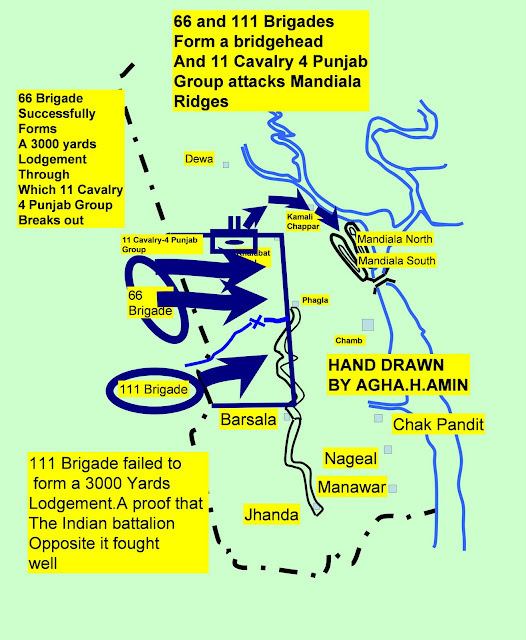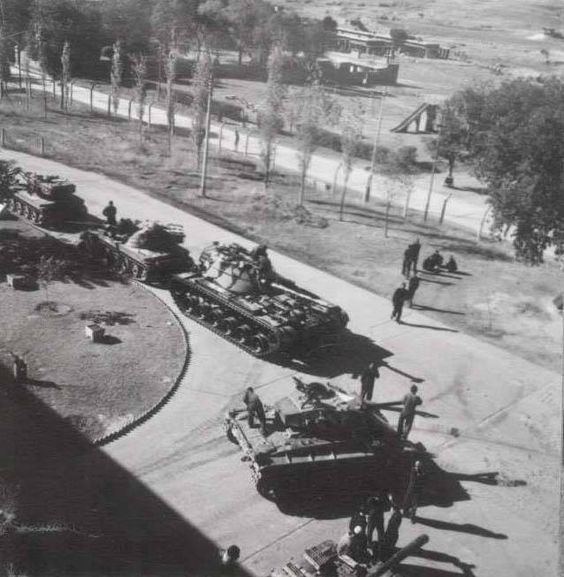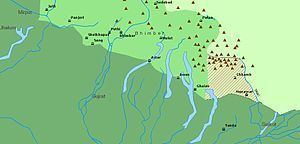Start date 1971 Location Bhimber | End date December 1971 | |
 | ||
Result Tactical Pakistani victory Similar Indo‑Pakistani War of 1971, Battle of Chawinda, Operation Gibraltar, Indo‑Pakistani War of 1965, Battle of Asal Uttar | ||
The Battle of Chamb, 1971 was battle in the Indo-Pakistani War of 1971. The Pakistani Army invaded Chamb on the same principle as the Battle of Chamb (1965). The Pakistan Army's primary objective was to capture the town of Chamb and surrounding areas which had strategic importance for both Pakistan and India. Previously, in 1965, the Pakistani Army was able to reach further beyond Chamb and was threatening Akhnur, a vital medium-sized town. India had captured Hajipir pass and made substantial progress in the Hajipir pass area in 1965, a key strategic location which the Pakistani Army had captured at the end of the 1947-48 Kashmir War. The Hajipir pass connects Uri and Poonch. Pakistan regained possession of the Hajipir pass during Tashkant agreement, an area the country still controls today.

Before the capture of Chamb by Pakistan forces, this western sector was under India's control. Similar to 1965, plans were made to capture this strategic town. The reason behind this plan was to deter Indians from attacking the crucial north-south line of communications passing via Gujrat. The 23 Division of Pakistan was given the task of protecting this sector and later attacking the Chamb-Dewa sectors. On the Indian side, 10 Division was given the task of defence of Chamb; the Indian army believed that by attacking Gujrat and Tanda, they could guarantee the defence of Chamb. In comparison to 1965, the Indians were better prepared in terms of defences and now realized the importance of the town and sector.

The battle ended, with the Pakistan Army taking control of Chamb. Pakistan gained about 45 square miles (120 km2) of Indian territory. The Indian Army put up stiff resistance at Mandiala and at several defensive features. Indian army withdrew when it realised Chamb could not be held defended. Across the Tawi, 4 Indian field guns were left unmanned after the last Indian Sikh soldier was killed by a Pakistani soldier of Bengali origin. Four Pakistani tanks were destroyed earlier in the battle, after which Pakistani Commander Major General Eftikhar Khan moved his forces from the south through Chak Pandit, all the time keeping pressure on the Indians from the north. This threatened to overrun the Indian forces, and they reluctantly fell back. The whole process came to a full stop on 10th December when the helicopter carrying Major General Eftikhar the indomitable GOC of the division was shot down, he was severely wounded and was evacuated to CMH Kharian where he died later. At this stage the Indian 10 Division had strong reserves which were uncommitted i.e an infantry brigade which was free after capturing the Phulkean Salient and the 3rd Armoured Brigade comprising 8th Light Cavalry (Vijayanta) and Central India Horse (T-55).However in case Pakistan’s 23 Division had captured a foothold across Tawi.These Indian reserves would have become committed. But nonetheless due to his excellent military planning, the Pakistani Forces were able to capture Chamb. Several Indian military vehicles were found that had been left behind by retreating Indian army.

Under the Simla Agreement, signed between India and Pakistan on 02 July, 1972; Pakistan retained the territory it captured in the Chamb sector whereas India retained the territory it captured on the Pakistani side of the ceasefire line opposite the Kargil sector.
Later Gen Andre Beaufre (Retd) of the French Army, who was invited by Pakistan and remained there throughout the war and who also later went to India by invitation and toured the battlefields after the ceasefire felt that it was difficult to get an accurate picture because both India and Pakistan grossly exaggerated the casualties in men and material inflicted on the adversary. He gave two examples to support his view. The Pakistani commanders in the Chhamb sector claimed that a brigade of four battalions supported by a regiment of armour and five artillery regiments had annihilated an Indian infantry brigade and captured many tanks, a large number of other vehicles and large quantities of arms and equipment. Some pictures shown to him in support of these claims appeared to him to be the product of trick photography. He visited the Chhamb sector soon after the main battle but did not see much captured equipment, and it certainly bore no relation to the much-publicized Pakistani claims.

According to Gen Beaufre, the Pakistani offensive in the Chhamb sector lacked boldness. Their forces moved slowly, and because of inadequate training and faulty planning, marrying of infantry and armour was delayed and resulted in a halt at the Manawar Wali Tawi, thus giving the Indians time to reinforce their position. Pakistan attacked positions west of the river with four battalions supported by one armoured regiment and five artillery regiments. Armour was not used in a concentrated manner, and artillery fire was spread all over instead of focusing on one objective at a time. Beaufre would have liked at least two brigades to attack simultaneously in the initial phase, followed by at least one brigade and a couple of armoured regiments to break through after securing the river line. A small force infiltrated behind the Indian defences over the Kachrael heights was not enough. A larger force in the same role would have definitely altered the situation.
